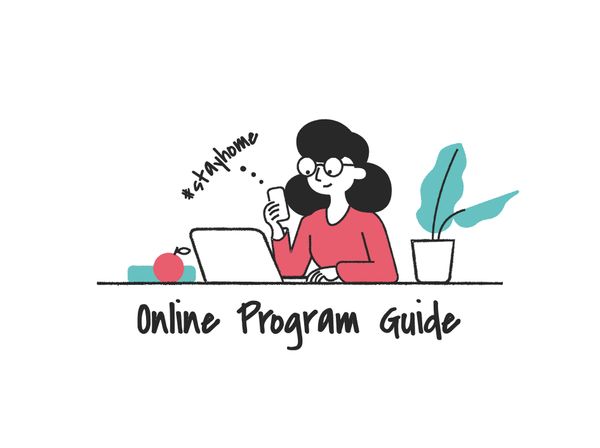The machines first roared up in the roastery of Roastopus in Kaposvár in January, 2019. Balázs Bakos started the business as a building engineer designer: he was driven by his passion for and curiosity about coffee, and probably he also needed a huge batch of willingness to experiment to start roasting coffee at home by transforming a popcorn machine. Balázs started Roastopus at the end of 2017, with Gabi Horváth, another outsider. They knew already before the official startup that “a quality product comes with a quality appearance”, so they contacted graphic designer Miklós Kiss, who gave a unique image to the brand. The story of the eight-legged barista. Interview!
Balázs, could you tell us the story featuring a certain popcorn machine?
At that time I was already very much into drinking coffee at home, and I also started to become curious about the other steps of the process, and about roasting in particular. By browsing foreign forums it turned out quite quickly that it wasn’t an impossible thing to do: you only need a popcorn machine and some green coffee. I managed to purchase some of the latter, and the machine sat on a shelf at my parents’ house, so there was nothing more to do but to actually start roasting.
It was magical to see the coffee transform, however, I only had 4 minutes or so to observe it, as the first creak went down quite quickly (the average duration of roasting is 10-12 minutes). The coffee wasn’t any good, but the experience was worth it all.
After doing some more research and with the help of my father’s technical knowledge, soon I stood in front of a completely transformed popcorn machine that could measure the temperature of beans (although in a quite primitive way) and the temperature of the air blown in was also controlled. It had no rationality, as it could roast 80 grams of green coffee concurrently, which wasn’t even enough for 4 double espressos, and it didn’t taste good either, but I fell in love with coffee roasting for good.
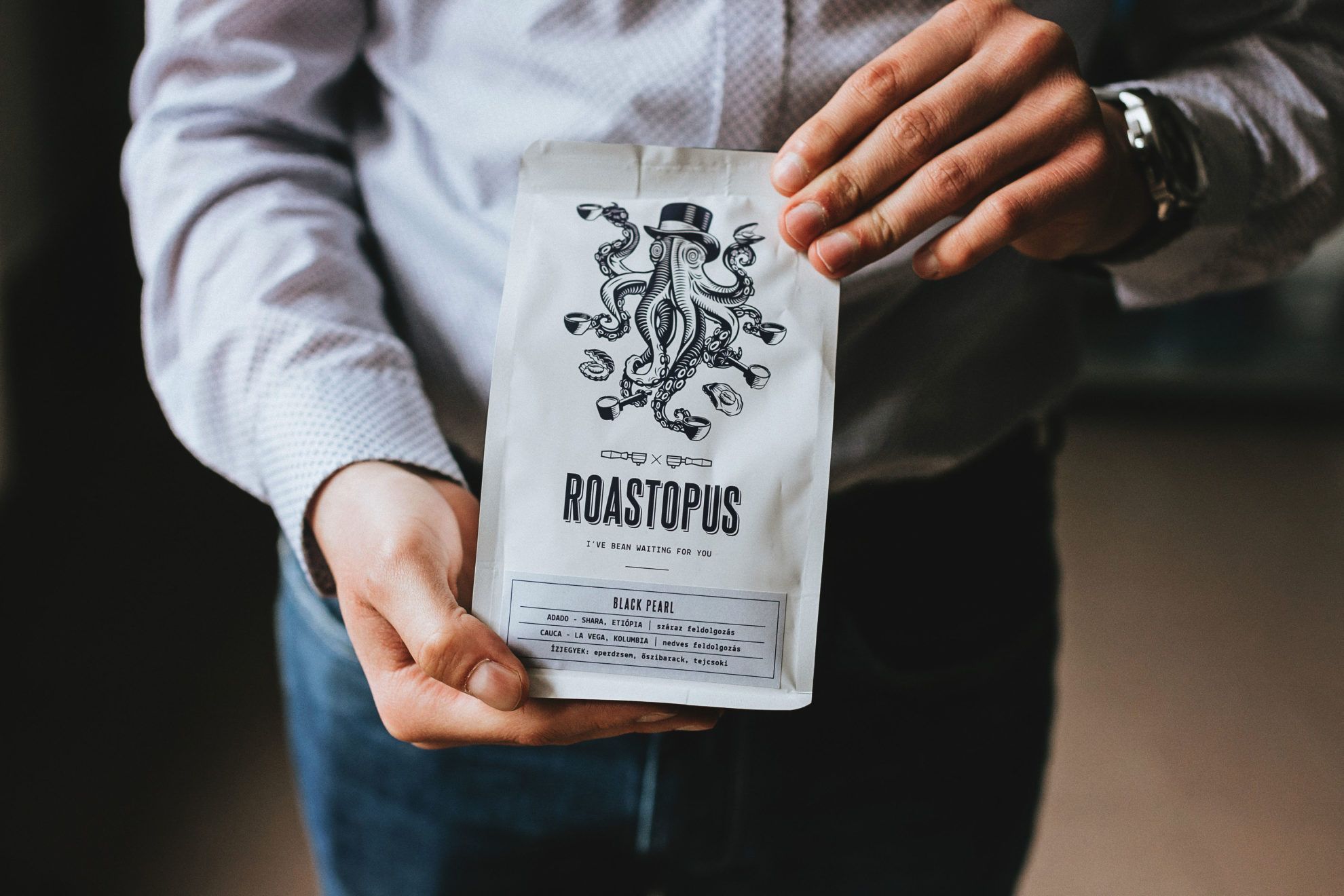
What happens in your coffee roastery in Kaposvár exactly? What work processes must the coffee go through before it’s placed in the aroma-preserving bags?
Balázs: The first step is procuring green coffee – always from a production area from where we can obtain freshly harvested beans. For this, we request loads of samples, we measure their moisture content already in this phase, and we also examine them under UV light – it highlights the defects, so to say. Then we roast them with the help of a sample roaster, and then we taste them with a standard procedure called cupping. It’s important that this process be completely standardized, so that each and every sample can be measured according to the same standards. To this end, we also manufacture the water used for cupping from distilled water and by adding mineral salts.
We only purchase coffee that meets our requirements in terms of taste and that also passed quality control with flying colors.
We take samples from every green coffee shipment received at the roastery and check in the method I described before that the quality of the products has not been compromised during delivery either. Then we repack them into smaller, hermetically sealable bags and then they wait for the day they are roasted in our cooled warehouse, away from sunlight.
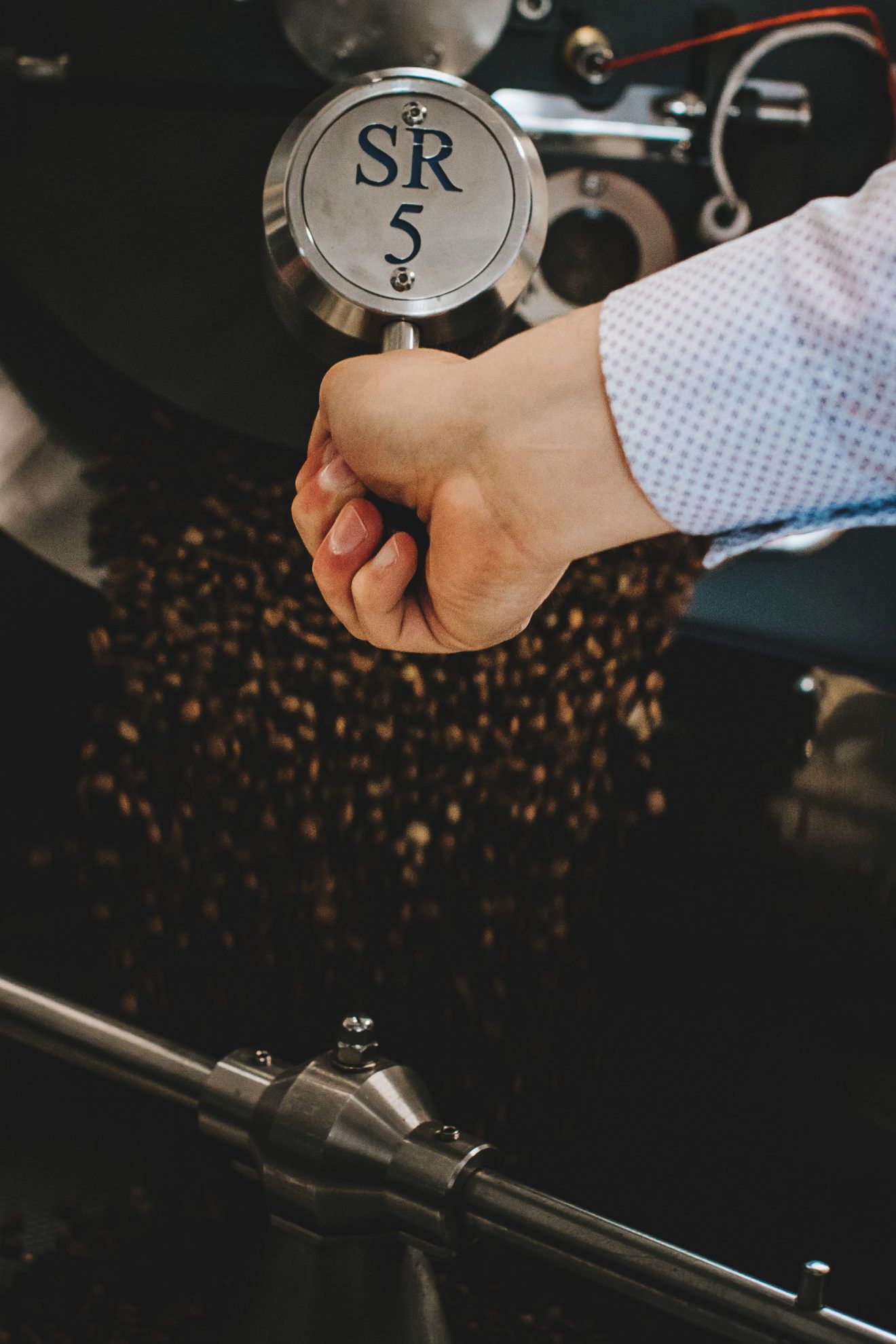
Many people are surprised by the fact that we cannot welcome guests during the process, we don’t offer so-called show roasting. In addition to the food safety reasons, this is also prohibited by our strict internal protocols, as our work is scheduled down to the second, and we concentrate all of our attention to the coffee. We control the roaster through a computer, we continuously track, record and analyze the parameters of both the machine and the coffee, so decimal degrees and seconds also matter in this process. This is the only way we can ensure the quality we ourselves expect, and how we can express our appreciation to the people harvesting and processing the coffee, as well as to our consumers.
We also measure the moisture content before roasting, and we taste each and every batch in the framework of cupping. We also measure the different roasting levels with a special color measuring instrument.
After we removed it from the roaster, it lands in the destoner, as the bags may contain some gravel or debris, and if we don’t remove them, they might destroy even the most professional grinders. We don’t have to say that this is inconvenient at home, but imagine what problems it could cause in a café.

Then comes manual selection, when we remove quakers. These are orange colored beans that are the result of cherries picked unripe. We don’t do this solely for aesthetic reasons: these beans can influence flavors negatively, too.
At the end, there’s nothing left to do but to measure the quantities exactly into the bags and then seal them with a foil sealing machine.
Gabi: In addition to the operational workflow built based on a strict protocol, it’s important to note that every activity performed in the roastery is created based on a pre-defined schedule. We strived to define our goals by setting time frames and the steps necessary for achieving the goals already when developing the idea of the coffee roastery. Every year we develop a strategy with different campaigns, consisting of tiny tasks built on each other, broken down to months and weeks. This is how we create harmony between sales, marketing and roasting, and how we provide a possibility for implementing the control processes and feedbacks.
In relation to procuring a new coffee, for example, we have to coordinate countless participants and work processes so that the given item can be in the shop in line with the schedule. In addition to defining the roasting profile of the coffee, we also coordinate shipping, delivery, keep the warehouse administration and take care of the necessary official notifications. In addition, we must also coordinate the design and manufacturing process of the new label, as well as the social media publications and the photo shootings and events related to the same.
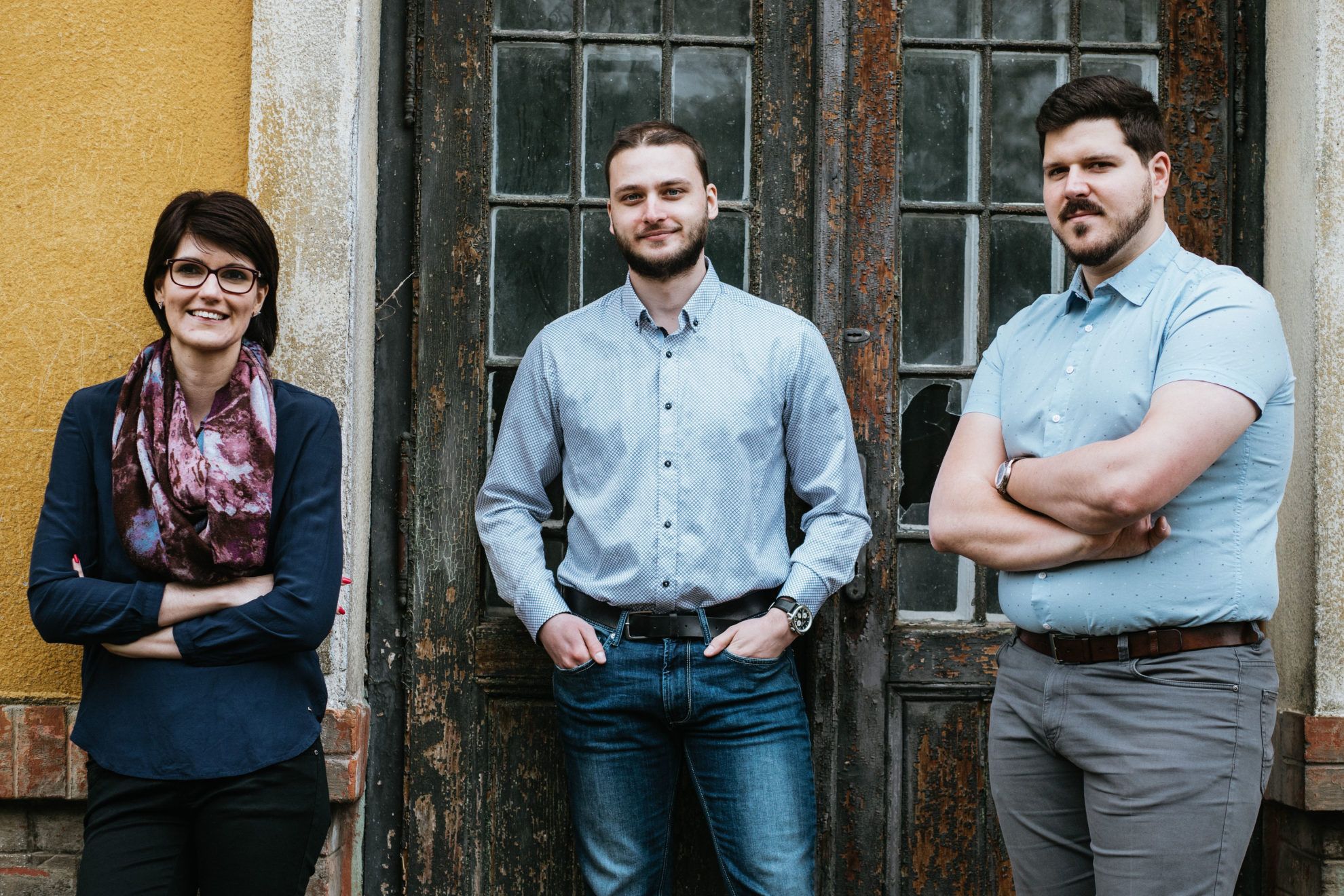
At the end of 2017, if I’m correct, Gabi gave the final momentum for launching your joint venture. You both started roasting as quasi outsiders, with different strengths and skills. Would you tell us a bit about how you work together and who does what within Roastopus?
Gabi: If I had to simplify the operation of Roastopus, I would highlight three pillars. One of them is coffee, the other is business management and the third is financial controlling. To sum it up: every activity that is related to coffee, on-site events and running the roastery is the task of Balázs, and everything else that takes place in the background is my responsibility. In the field of financial planning, I would like to mention our third and most silent partner, Ákos Nagy, who monitors our work as an economist and gives us financial advice where necessary.
I spend most of my time with management tasks: I handle daily administration, I keep contact with authorities, carry out the necessary procurements (not related to coffee), supervise the performance of ongoing contracts with partners and try to maintain a harmony between marketing and sales. The latter is a field with which I have never worked with before, and yet I enjoy it very much: thinking about campaigns, developing and implementing them and then analyzing the results. There is an outstanding marketing team with whom I work with every day – I learn a lot from them.
Balázs: Basically this is why I said yes without hesitating when Gabi asked me whether we should do it. I was thinking about it for long, but I knew that if I start roasting in my garage to entertain myself and my friends, it will lead me nowhere. Based on the experience gathered in the course of our previous jobs, I was sure that this team will work together very effectively and I could focus on what motivates me day by day: coffee. These are all necessary for ensuring continuous development. We form a very good team together, everyone does their best on their own fields and we motivate each other with this mutually.

Before contacting Miklós Kiss, did you have any plans in terms of design? Did you have any exact ideas as to what current trends exist amongst coffee roasteries and what kind of an image or packaging you wanted to have compared to them?
Balázs: We knew for sure that the appearance had to be outstanding, as the first impression is very important in the case of a product. As a result of our long-term plans, it was also a criterion that the image hold its own also on an international level and to bring some colors to the palette. And last, but not least, it had to be something that we are happy to hold in our hands every day.
It’s not a secret that this was the element of launching the roastery that we had the least experience in: this is why we looked for a graphic designer who could manage the complete image and the marketing potential in a complex manner. Practically we weren’t really looking for a graphic designer, rather for an art director.
Gabi: Of course, we started to think, and we had some ideas that we thought were going to be a real hit, but we had to accept that this wasn’t our terrain. I consider it important that as entrepreneurs, we recognize the fields in which we need external support, as there is not a single person on the planet who is good at everything…
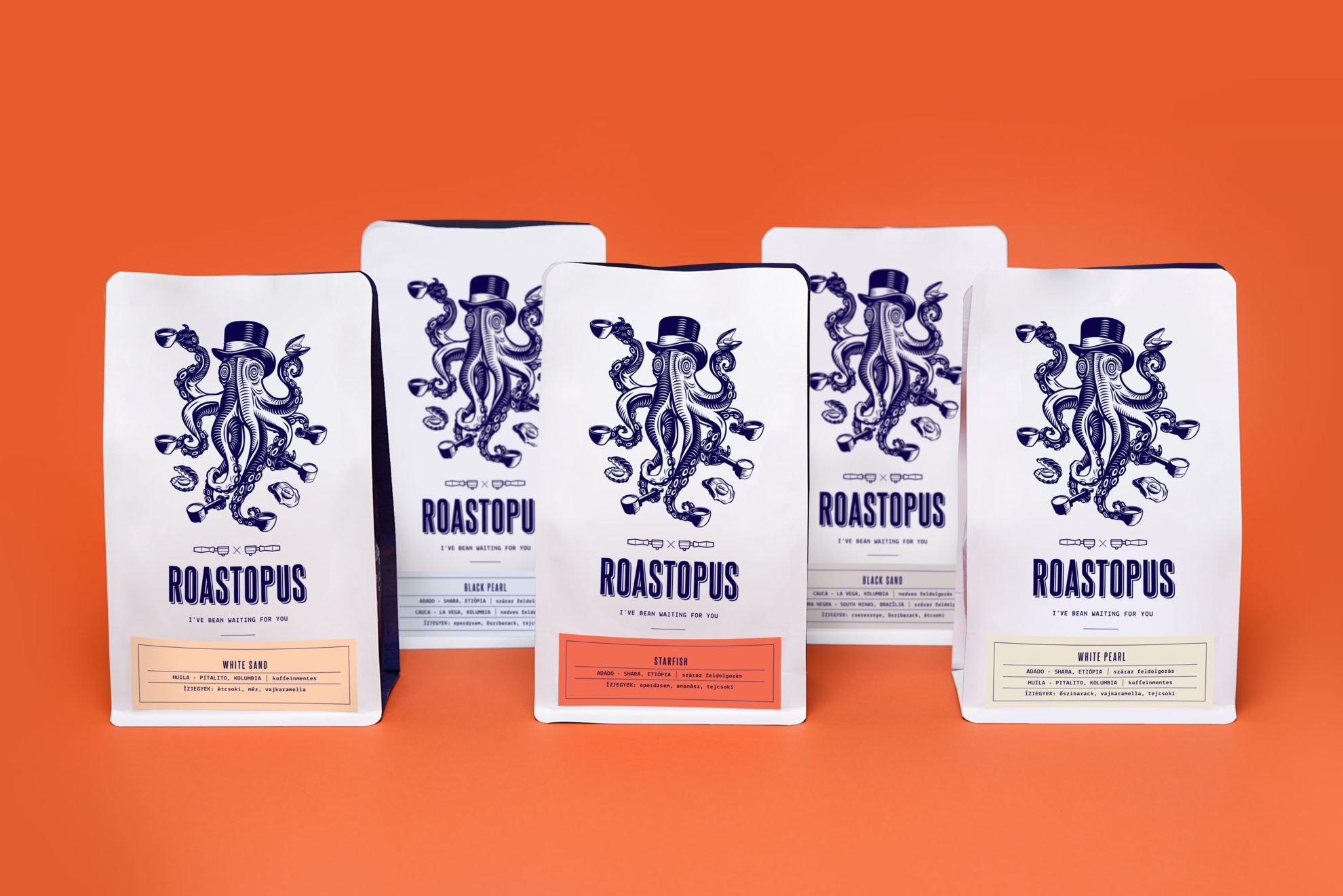
You could have started already back in 2018, as you had almost everything for entering the market at the time. You could have launched without a unique packaging and design. Why did you consider this important? And why did you choose Miklós Kiss?
Balázs: The unique packaging came with a price, and that price was the 4 months needed for manufacturing, but we thought we could not enter the market with a semi-finished product, it didn’t make any sense. It’s hard to emphasize quality if the product’s appearance does not reflect it. We saw Miklós’ works several times before, and only his personality that we got to know at the first meeting was more impressive than his projects. We knew it in an instant that we had to proceed with him. An energetic personality who handles the complete process of appearance as a whole, every detail is important for him.
What do you think Roastopus would be like today if you decided to launch anyway?
Balázs: The first word that comes to my mind is “mediocre”. I think we wouldn’t have enough motivation to dedicate this amount of energy and time to it, so we wouldn’t be anything near where we are now. Now if we take a step back and look at it, we think it has potential and it’s only up to us what we’ll make out of it, and this gives me strength.
Gabi: We’ve set the bar quite high in every field. To this end, we have to choose the harder path many times, but at the same time this is a kind of motivation that can push us through any rough patches. And there is a straight road up from there.
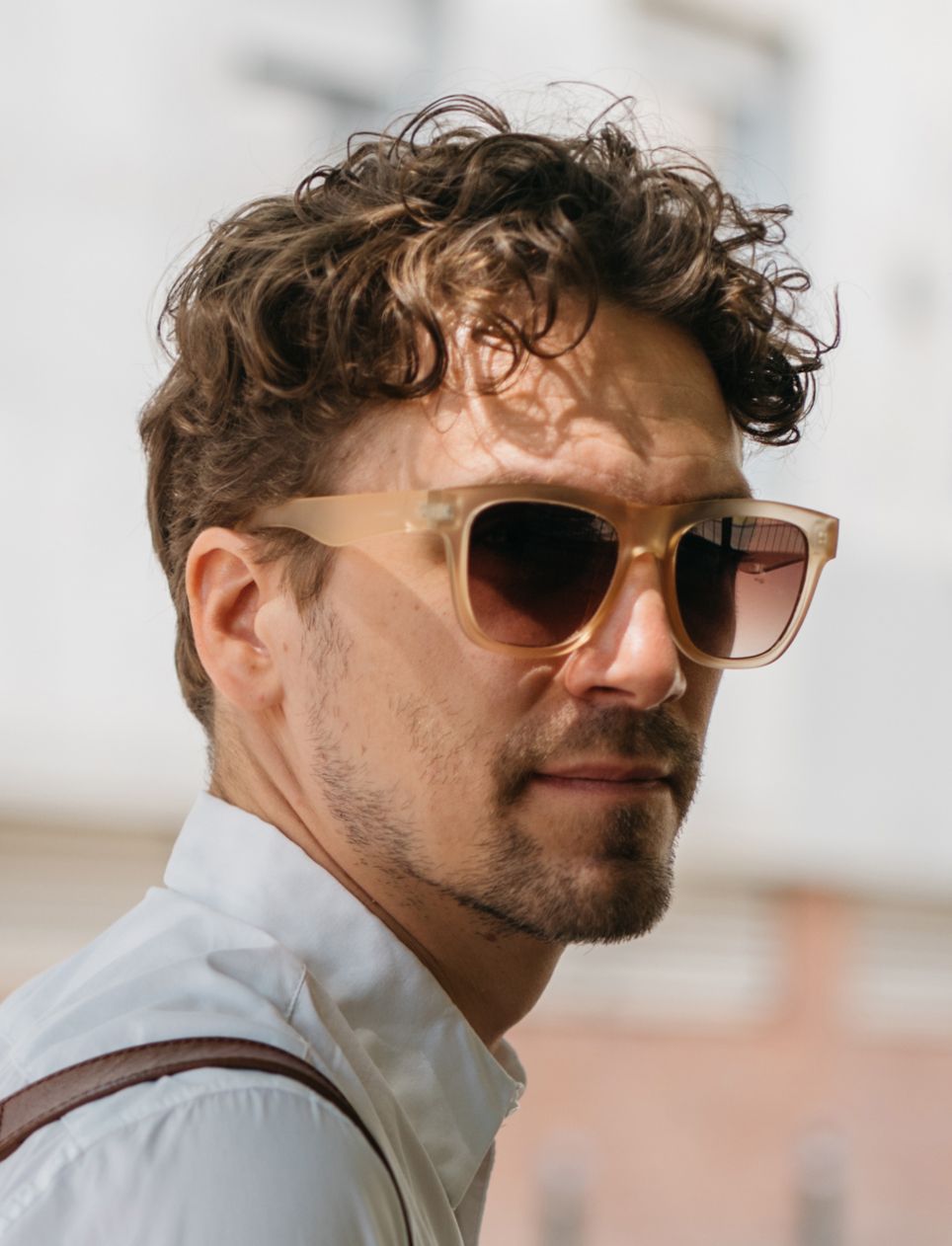
Miki, could you tell us a bit about how your work with Balázs and Gabi started off? What was the path that led you the eight-legged barista?
Miki: Balázs contacted me with this job. They were very sympathetic from the first instant. The birth of Roastopus was very simple and vision-like. Balázs and Gabi originally brought a different name, I thought about it a lot, but somehow it didn’t feel right. They gave me a free hand, and this illustration popped up in my mind. It had a powerful vision of it, I just wasn’t able to put the name together. Then I shared this problem with a friend of mine over the phone that I couldn’t combine the words “octopus” and “roastery”, and he, being a huge fan of puns, came up with “Roastopus” in an instant. I liked it very much and I also sent it to Balázs and Gabi. They jumped on it right away.
I imagined a brand from the very first moment that is playful and elegant at the same time. Hipster, but very high quality. One side of the packaging is very nice and lovely with the small eight-legged octopus figure, while the backside of the packaging has a classic feel to it with the rose gold sign displayed on the deep blue color.
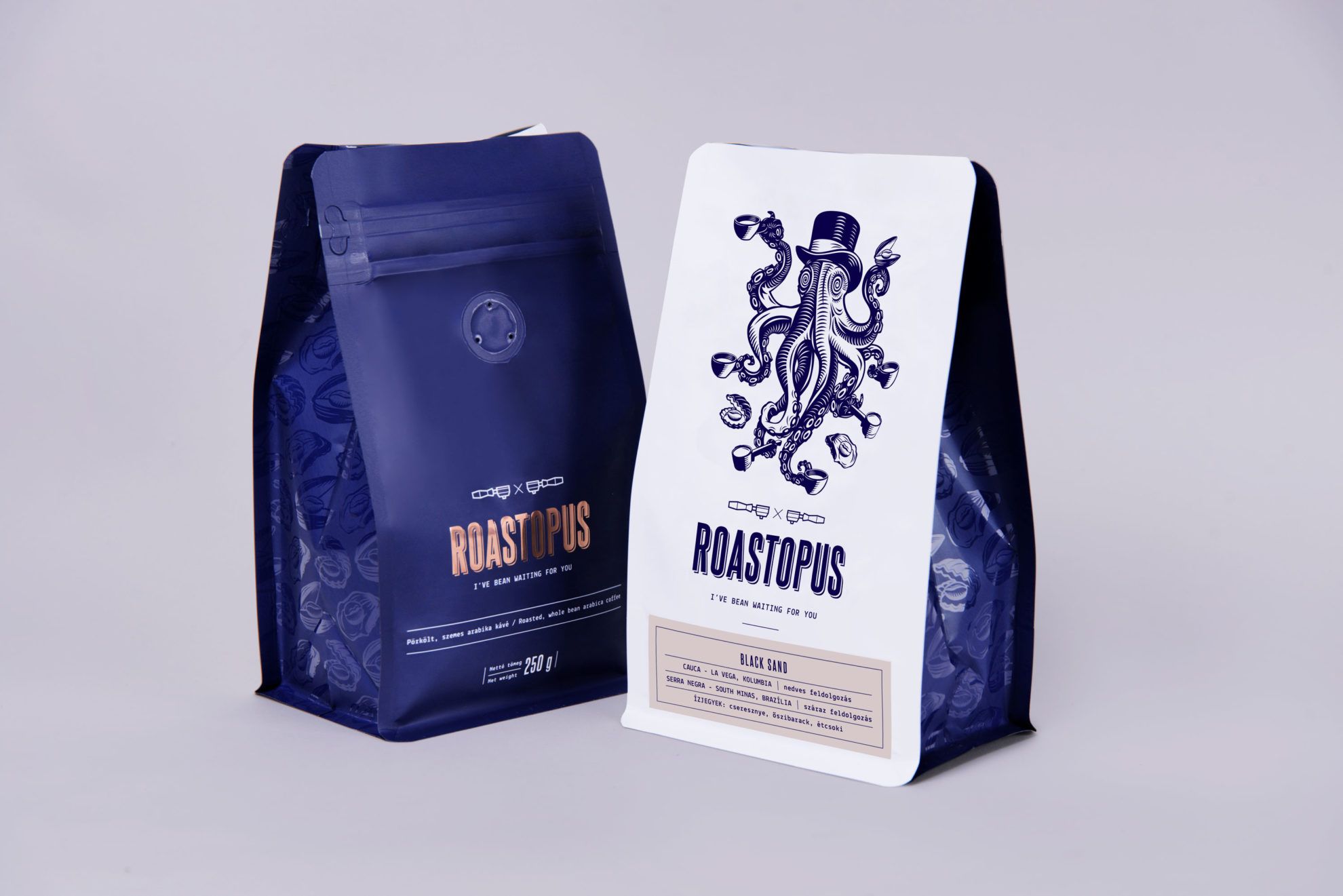
You determine the visual appearance of Roastopus – may it be packaging, business cards or the website – in every case. As it is a roastery in the countryside, it was very important (and Balázs and Gabi also recognized this) that the customers encounter a very user-friendly interface and a well-functioning online store. On this year’s KávéBár Bazár event which Roastopus also attended, you were also in charge of designing the booth. While the former is virtual, the latter is intended to communicate the brand in the real space. Would you tell us a bit about these design processes?
Miki: Anyone who knows me knows that I adore complex tasks of this kind. Once the packaging has been developed, I also came up with the visuality of the website. At the same time, it is important to note that this is a more comprehensive situation, as the visuality of the website virtually depends on the images uploaded. The majority of these were shot by my wife (Eszter Sára Cseh – the Ed.). This made the website truly coherent.
The booth is a completely different issue. I wanted to create a booth that brings the elegant café feeling but also highlights the appearance of the product at the same time. Basically I imagined a brand that people love because it’s funny, yet very high quality.
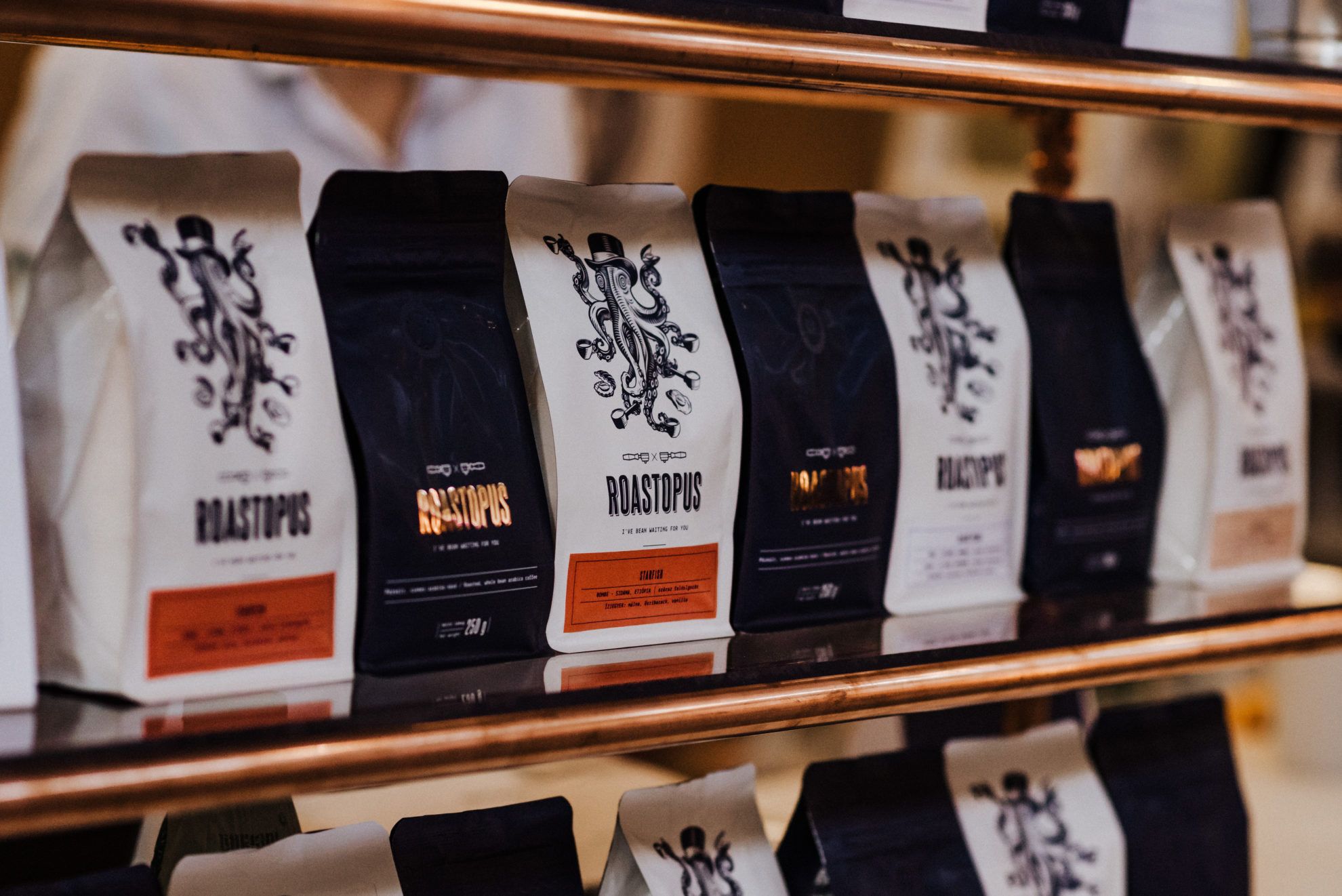
You receive orders from Kaposvár and Szeged, but the majority of orders come from Budapest. Have you thought about also appearing in the capital in one way or another, maybe on a permanent basis? Do you have any plans like this?
Gabi: The gastronomy in the capital, despite the fact that we are talking about one of the most open parts of the country, is a quite closed world. The basic concept of Roastopus is direct sales through the online store, which, of course, does not mean that we cannot be available in cafés on several spots in the country. We are temporarily available in Budapest in some spots, but serving cafés is not our main profile.
Balázs: We don’t expect exclusivity from any of the cafés fundamentally, we also prefer and believe in diversity. Regardless of this, we are happy if we can enter a long-term partnership after they get to know our coffees. Our selection is updated more and more frequently, so we can always offer something new.
One of our not-so-secret long term plans is to allow people to taste our coffees in any city of the country.
What do you advise to those who are still beginners in this coffee universe: which of your coffees should they taste the first?
Balázs: If the person in question is quite open, and willing to dive in right away, I would definitely recommend “Starfish”. Before Gabi raises her eyebrows, I would like to add that we recommend “Seashell” for those who are only getting to know light roast coffee.
Gabi: Well, yes, if it was up to Balázs, our selection would only consist of dry Ethiopian coffees. We fight our battles every day, and we don’t always agree on everything, but that’s alright.. this is what makes our story complete.
Photos: Eszter Juhász and Eszter Sára Cseh
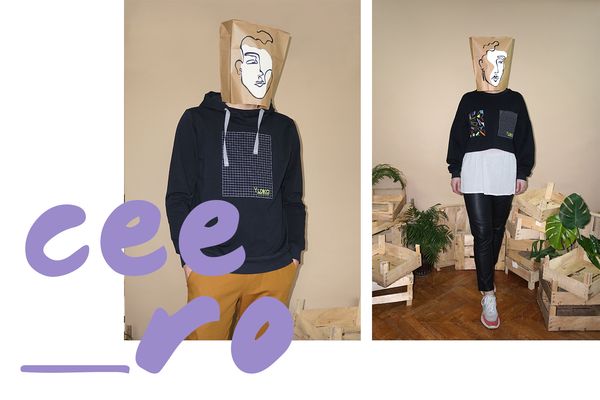
CEE_RO | Yukka streetwear
